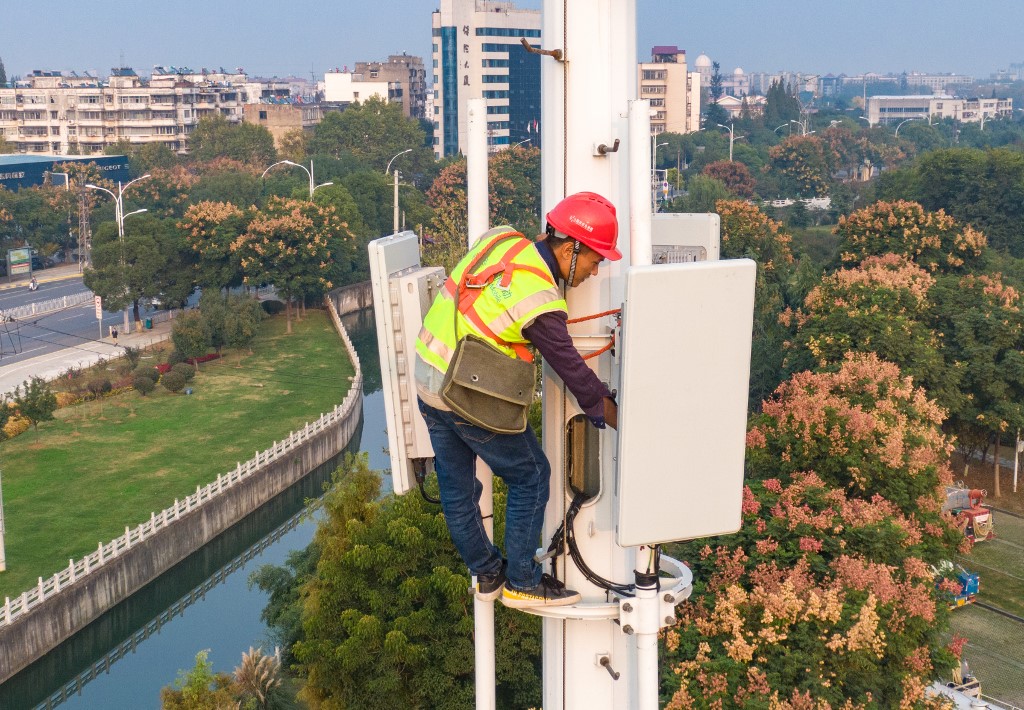China is pushing for power companies and telecom networks to work together to reduce costs of towers as it rolls out its 5G network, with telecom antennae and optical cables on power pylons and sharing of resources such as substation facilities
(AF) China has released a plan to actively promote the use of 5G technology in the energy sector and the convergence of the country’s telecom and power infrastructure in a bid to fuel integrated growth of the two sectors.
“The deep integration between 5G and various industries in the energy sector will effectively drive innovations in the production and consumption of energy, and inject a strong impetus to the energy revolution,” a 5G implementation plan published on Friday by China’s top economic planner and authorities overseeing energy, cyberspace and information technology said.
In the next three to five years, China aims to develop key 5G use cases, build dedicated networks, and establish competitive business models in areas such as “intelligent” power plants, power grids, coal mining, oil and gas production, and comprehensive energy supply, the 5G plan said.
The document also calls for power grid companies to allow telecom carriers to attach their telecom antenna and optical cables to the power towers, and share resources such as power optical cables, fibre cores, and substation facilities with the carriers and tower companies, so the carriers can build 5G networks with “lower cost and more efficiency”.
The power grid companies are encouraged to supply power directly to the carriers instead of going through intermediary parties, and the carriers will be able to participate in electricity trading.
China was home to 700,000 5G towers as of last November, accounting for almost 70% of all 5G towers deployed around the world. Chinese investment bank CICC estimate that China will build another 800,000 to 1 million 5G towers this year.
5G towers use a lot of power
But 5G towers are much more expensive to deploy than the 4G ones, and they also consume more electricity. High power consumption has forced China Unicom to put some of its 5G base stations to “sleep” overnight to reduce electricity costs in the city of Luoyang.
A white paper from telecom equipment maker Huawei last year revealed that 5G base stations use up to three-and-a-half times more energy than 4G infrastructure. Part of the problem is that this new generation of mobile connectivity requires more densely placed base stations.
It will take China’s three telecom operators several years to make a profit from 5G, analysts say, and many Chinese consumers have complained about the higher prices of 5G service packages, saying they don’t need the extra bandwidth.
Now the government is pushing for a collaborative model between the carriers and the power grid companies to lower 5G deployment costs.
The plan is to achieve the “sharing and reuse of infrastructure” for the public 5G network and the dedicated power network while ensuring safety so as to avoid “repetitive construction”, the document said.
Beijing also plans to take the lead in investing in 5G applications for the energy sector using central government funding and usher in more private capital.
“As the energy industry faces slower growth and higher costs, the government has introduced several policies to support the digital transformation of the industry and propel its growth,” Hou Bin, an analyst from Soochow Securities, said.
Digital transformation can help China’s energy industry increase sales, reduce costs and improve efficiency, he noted.
Widespread use of digital technologies could cut production costs for the oil and gas industry by between 10% and 20%, including through advanced processing of seismic data, the use of sensors, and enhanced reservoir modelling, according to a report by the International Energy Agency.
It can also boost technically recoverable oil and gas resources by around 5% globally, the report said.
A wave of companies such as Chinese equipment maker Huawei are tapping opportunities in the digital transformation of the energy sector.
In February, Huawei set up a joint “intelligent” mining innovation lab with China’s Shanxi province and two local companies. Huawei founder and CEO Ren Zhengfei told reporters that the mining sector was an untapped area with high growth potential.
5G technology makes unmanned mining as an option to garner resources from regions with a harsh climate, such as the Arctic, Ren noted.
“China has around 5,300 coal mines and 2,700 ore mines. If we can serve these 8,000+ mines well, we could expand our services to mines outside China,” he said.
Last week, Huawei established a wholly-owned digital energy subsidiary with a registered capital of 3 billion yuan ($469 million), according to the Chinese business information search platform Tianyancha.
The subsidiary’s scope of business includes research and development of online power measuring technology, emerging energy technologies, energy recycle systems, and the manufacturing of photovoltaic equipment and parts.





















